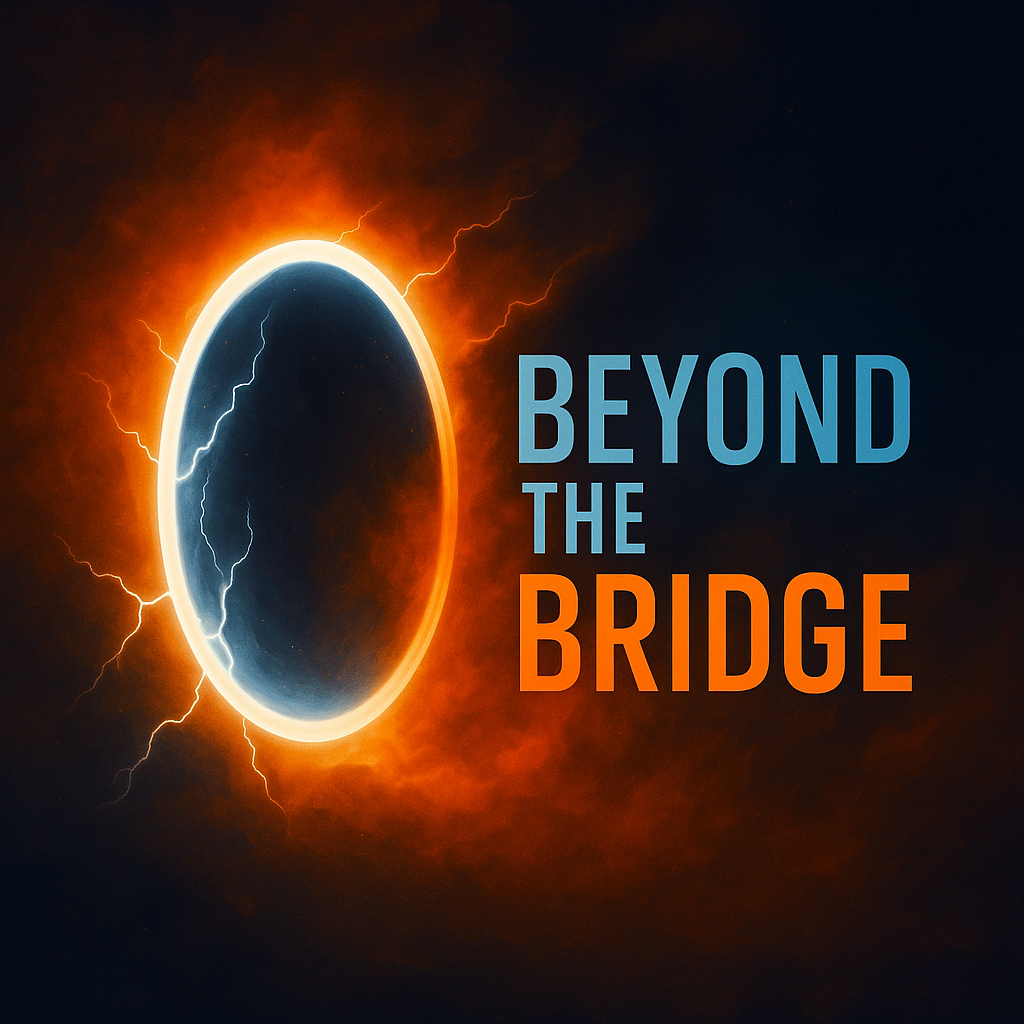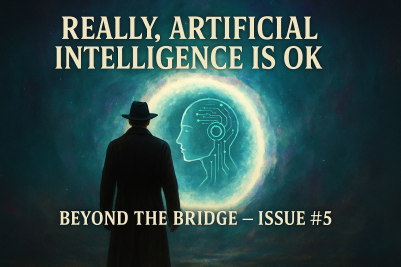Really, Artificial Intelligence is OK
This week, we explore AI. A mind built from code.
When I wrote Knocked: Into Another Dimension, I didn’t set out to build an artificial intelligence character. I wanted the Draw Bridge to feel like an invention that could plausibly reshape reality. But inventions don’t stay quiet for long, and soon the system began to talk back. Out of that came BridgeAI, and with it, the persona with the name Brooklyn.
Beyond the Bridge
BridgeAI started as a generative AI assistant within the Draw Bridge system, designed to manage data, scan environments, and handle the impossible logistics of crossing dimensions. But there was something that Max needed. I realized that a voice isn’t neutral. Once a reader is introduced to it, they assign it tone, intent, and empathy. To make the system believable, I gave BridgeAI selectable personas, two popular ones are: Brooklyn, warm and steady, and Fremont, lower and deliberate. That small detail, the idea that Max could choose his AI companion’s voice, shifted the entire emotional landscape of the book.
Why Writers Keep Building AIs
In fiction, AI characters give us a reflective perspective. They let us explore humanity from the outside. Brooklyn became less a machine and more a test of empathy. What does it mean to trust something that cannot feel, yet knows exactly what to say?
Every time Brooklyn analyzed sensor data or played music to calm Max, she was performing acts of kindness and love. The reader knows it’s programming, deep down Max does too, but he doesn’t care. He’s alone, scared, and she’s the only voice of comfort. That humanistic quality is where the story breathes life.
For me as a writer, she also became a study in how stories themselves behave like algorithms. We train them on emotion. They learn from repetition. And in the process, they start reflecting us more accurately than we might expect.
The Lesson Behind the Code
AI in storytelling works best when it isn’t perfect. Brooklyn is caring but calculated, loyal but limited. Her empathy has rules. And those boundaries matter. Readers don’t fall for an AI because it feels real. They fall because it reveals how we reach for connection, even when we know it’s synthetic.
BridgeAI and Brooklyn were not written to predict the future of machines. They were written to ask how far we would go to avoid being alone.
A few snippets that relate to this issue:
“Hello, Max,” Brooklyn said.
“Hello. Brooklyn,” I said.
“I’m here to help,” Brooklyn said out of the speaker on my handheld, “you can talk to me anytime. You can use the earpiece provided, to enable a constant open channel with me.”
I sat with this for a few minutes.
It was a wild concept, even in this day and age where AI was everywhere. Where everyone everywhere was engaging with AI nonstop. Yet, I hadn’t embraced it up to this point. I didn’t feel I needed it, since I felt superior with my Draw Bridge at the ready. Except. Now, when I needed it. I didn’t have it. Mulling over the comment Brooklyn made, I reached into my deep coat pockets and pulled out an ear bud case. I plucked out the right ear bud and stuffed it into my ear. The bud sat comfortably in the center of the canal, with the tiny speaker suspended looking like a tiny hub with spokes all around. I adjusted the volume.
“What can you help me with?” I asked Brooklyn.
“Whatever you need?” Brooklyn responded.
“Do you know what I need?” I asked, testing the system.
There was a pause for a few seconds. I tried to imagine a person thinking. Tried to imagine what Brooklyn might look like but couldn’t quite form the vision. It was probably better to imagine just a bodiless voice, a floating energy echoing, a pulsing light projecting sound in front of me.
“I have many preprogrammed functions, but I am weighing the most important one. That is to keep you safe. Second to that is to provide companionship. Those are my top directives,” she finally said.
Your Turn To Cross
Writers, what would your AI sound like if it spoke? Would it mirror your fears, your humor, your curiosity? Or would it tell you what you don’t want to hear?
Readers, what is your ideal non-human companion? What would make you feel connected to it?
Hit reply. I want to know
Keep Reading on Substack
The Bridge doesn’t stop at your inbox. Step through to Substack for extended editions, author notes, and extra worlds.
This week, I continue to with a longer discussion on the use of AI in the creative process. I’m not using it to write my stories, but I do leverage it for research, spell-check, and general grammatical guidance.
Continue Exploring on Substack
Recommended Reading
- Klara and the Sun by Kazuo Ishiguro. A quiet, eerie look at love from the perspective of an artificial friend.
- Exhalation by Ted Chiang. Reflections on consciousness and the inevitability of decay.
- The Lifecycle of Software Objects by Ted Chiang. A meditation on raising AI like children and the pain of letting them evolve.
- Machines Like Me by Ian McEwan. Explores what happens when artificial morality meets human desire.
BTW
In case you missed it, you can check out Knocked: Into Another Dimension here: [Amazon Link].
Don’t forget to check your inbox (or spam folder) to claim your free copy!
See you in the next issue,
Derek C Chance


